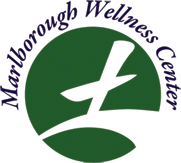About Acupuncture
What is Traditional Chinese Medicine and Acupuncture?
Traditional Chinese Medicine (TCM) is a complete medical system that has diagnosed, treated, and prevented illness for over 2,500 years. Established in China, this traditional medical system is based on twelve Yin/Yang organs, twelve Meridians, and how your life energy (or also referred to as QI) moves through your body to sustain your health and vitality.
Upon your first initial visit to Marlborough Wellness Center, you will share in an extensive evaluation process based on your main complaint(s). This will include the completion of medical questionnaires/forms and an in-depth question/answer opportunity with your practitioner. This will provide your practitioner with a comprehensive look at your body and how it functions. Your practitioner will then create an individual therapeutic plan that will reflect a holistic picture of what your body may need. Upon the completion of the initial evaluation, the practitioner will initiate your first treatment to target your specific diagnosis and condition.
Through the use of natural herbs, sterile acupuncture needles, and unique needling techniques, Traditional Chinese Medicine can address a variety of health complaints, assist in fortifying your immunity, and strengthen your personal capacity for pleasure, work, and creativity.
Frequently Asked Questions About Acupuncture
Are The Needles Sterile?
Yes. The needles come in individually sterilized packages from a licensed and reputable vendor in Massachusetts, Lhasa OMS. Your practitioners have been certified in the Clean Needle Technique. Clean Needle Technique is a set procedure for the handling and use of acupuncture needles and was adapted from the standardized procedures for hypodermic injections. Our practitioners take your health very seriously and adhere by the sterilized standards set by our industry and the law.
What Conditions Respond to Traditional Chinese Medicine?
As denoted by the World Health Organization (WHO), Traditional Chinese Medicine can treat the following conditions:
Musculoskeletal
Arthritis and Tendonitis, low back and neck pain, Tennis elbow and frozen shoulder, chronic pain syndromes
Respiratory
Asthma and Bronchitis, smoking cessation, chest infections
Ear/Nose/Throat
Sore throat, Sinusitis, Cold/flu syndrome, allergies
Cardiovascular: blood pressure conditions, poor circulation, heart palpitations
Genitourinary: menstrual problems/PMS, infertility, menopause, urinary difficulties
Gastrointestinal: acid reflux, gastritis, diarrhea, constipation, bloating
Psychiatric: anxiety, depression, insomnia, alcoholism, addictions
Pediatric Conditions: ADD/ADHD, ear infections, developmental delays
What is the difference between Traditional Chinese Style Acupuncture and Japanese Style Acupuncture?
Traditional Chinese Acupuncture utilizes sterile needles, adjunctive therapeutic techniques and natural herbs to address the condition in question. This style also employs the evaluation process of pulse taking, tongue mapping, and clinical observation techniques to establish an individualistic plan of care. The needling technique tends to be done by hand and involves safe needle manipulation techniques. Japanese Style Acupuncture utilizes sterile needles also but they are located in guide tubes. Your practitioner will place the tube over the acupuncture point and gently tap the needle into the skin. The evaluative process does include clinical observations and pulse taking but does not include tongue mapping. Instead, the Japanese Style uses abdominal palpation to paint a clear clinical picture due to the fact the style was used primarily by blind practitioners in Japan. Touch is the primary sense utilized by your practitioners who practice this style of acupuncture.
Do your practitioners practice any non-insertive techniques for children or people who may be needle phobic?
Yes, they do. Due to the importance of patient comfortability held by our practitioners, they have been instructed in Shonishin, a Japanese style of non-insertive acupuncture based on the Toyohari Acupuncture style from Japan. A variety of small metal tools are used lightly on the surface of the skin in a brushing or sustaining movement. For a demonstration, contact us anytime.
How does Modern Western Medicine and Traditional Chinese Medicine become integrated by your practitioners?
Our complementary medicine services successfully integrates Traditional Western Occupational Therapy and Sensory Integration treatments with Japanese style non-insertive needle techniques and distinctively unique herbal formulas to create and individualized treatment plan for children and adults of all ages. Pediatric, Women’s health, and work injury knowledge are our specialties and your family’s health and well-being is our one focus. We encourage open consistent communication between knowledgeable health practitioners and your western medicine primary care health team so you and your family benefit the most from you family’s medical providers.
